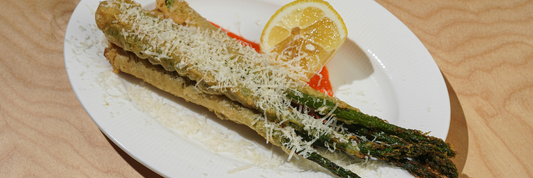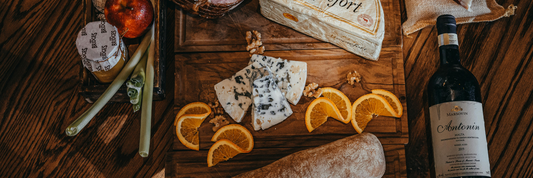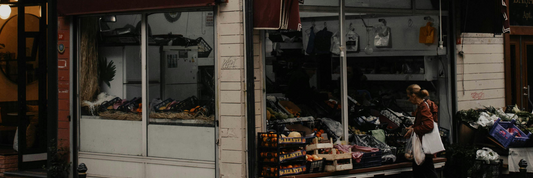When it comes to frozen chicken nuggets, packaging plays a critical role in keeping products fresh, safe, and appealing to consumers. The right packaging prevents freezer burn, preserves texture and flavor, and ensures nuggets remain intact during storage and transport. With options ranging from flexible pouches to rigid trays and paperboard cartons, choosing the best packaging for frozen chicken nuggets depends on factors like barrier protection, durability, cost, and branding needs. This guide explores the leading packaging formats, materials, and requirements to help food businesses select the most effective solution.
- How to Pack Chicken Nuggets for School Lunch or Work
- How to Bread Chicken: Tips to Keep the Coating Crispy and Sticking
- Where to Buy Custom Paper Chicken Bucket Packaging in Canada & US
Types of Packaging Options for Frozen Chicken Nuggets
Flexible Packaging
Flexible packaging is the most common choice for frozen chicken nuggets because it is lightweight, cost-effective, and easy to store. It can be formed into different bag and pouch styles, often using laminated films that provide moisture and oxygen barriers to protect nuggets during frozen storage.
Pillow Bags / Lay-Flat Bags
Pillow bags are the simplest and most economical frozen food packaging. Made on vertical form-fill-seal machines, they are sealed on three sides and form a “pillow” shape once filled. They are widely used for bulk frozen nuggets or family-sized packs. While cost-effective, they don’t always provide resealability, so they are often paired with clips or separate storage after opening.
Stand-Up Pouches with Zippers
Stand-up pouches are popular for retail because they combine shelf visibility with consumer convenience. They feature a flat bottom so the bag can stand upright in freezers and resealable zippers for portion control. This format protects nuggets from freezer burn while allowing consumers to reseal and return the product to the freezer.

Gusseted or Block-Bottom Bags
These bags expand to fit larger volumes and create a more stable base than pillow bags. They are common in club-sized or bulk packaging of frozen nuggets. Gussets provide strength and allow for better pallet stacking and transport stability.
Rollstock / Film Packaging (Vertical Form-Fill-Seal)
Rollstock film is used in automated production lines where film rolls are fed into machines that form, fill, and seal pouches. This method is efficient for high-volume nugget packaging and allows custom sizes, clear windows, and printed branding. Laminated films with polyethylene or EVOH barriers are commonly used to prevent moisture loss and freezer burn.
Rigid / Semi-Rigid Packaging
Rigid and semi-rigid packaging provides more protection from crushing and mechanical damage during transport. These formats are often used for premium products or where product visibility and presentation matter.
Plastic Trays with Lids
Plastic trays, sealed with film or snap-on lids, are often used for portion-controlled frozen chicken nuggets. They keep nuggets in place, reduce breakage, and can be microwave-safe for consumer convenience.
Foam / Polystyrene Trays (Insulated)
Foam trays are lightweight, provide insulation, and can protect against minor impacts. They are typically overwrapped with film. While economical, environmental concerns have reduced their popularity in favor of recyclable plastics or coated paperboard.
Plastic Tubs / Tubs with Snap Lids
Plastic tubs are less common but are used for bulk or foodservice frozen nuggets. They provide resealability and strong mechanical protection but are heavier and take up more freezer space than bags or cartons.
Paperboard Cartons / Folding Cartons (Overwrap, Inner Bag + Box)
Paperboard cartons are widely used in combination with an inner plastic bag. The nuggets are sealed in a flexible film bag to maintain freshness, and then the bag is placed inside a printed paperboard box. This dual system allows for:
-
Barrier protection from the inner bag (moisture, oxygen)
-
Shelf presence and branding on the outer carton (graphics, nutritional info)
-
Stackability and rigidity for shipping and freezer storage
Cartons make handling easier for both retailers and consumers. They are also highly printable, giving brands the ability to communicate recipes, usage instructions, and marketing claims clearly.

Fundamental Requirements for Frozen Food Packaging
Frozen chicken nuggets need packaging that not only holds the product but also protects it through storage, transport, and freezing conditions. The packaging must maintain food safety, prevent freezer burn, and preserve flavor and texture until the product reaches the consumer.
Barrier Properties: Moisture Vapor Barrier, Oxygen Barrier, Grease Resistance
-
Moisture vapor barrier: Prevents water loss that leads to freezer burn and dry, tough nuggets. Laminated films or coated cartons help lock in moisture.
-
Oxygen barrier: Protects against oxidation, which can cause rancidity in breading or oils used in nuggets. Films with EVOH or metallized layers are often used.
-
Grease resistance: Breaded chicken releases small amounts of oil, so packaging must resist grease staining or weakening. Coated papers or laminated plastics provide the necessary resistance.
Puncture Resistance and Tensile Strength at Low Temperatures
Frozen nuggets have sharp edges and can exert pressure on packaging when shifted in bulk. Packaging films must resist punctures, tears, and cracks, even at subzero temperatures where plastics become brittle. High-tensile polyethylene or nylon blends are common for this purpose.
Seal Strength and Hot Tack for Freezing
A strong seal is critical to prevent air leaks and contamination. Frozen food packaging requires:
-
Seal strength that resists splitting when dropped or stacked in cold conditions.
-
Hot tack properties, meaning seals must form quickly and securely during high-speed filling before the package cools. This ensures efficiency on vertical form-fill-seal (VFFS) lines commonly used for nugget packaging.
Food Safety and Regulatory (FDA / USDA, Food-Grade Materials)
All packaging for frozen chicken nuggets must meet FDA and USDA requirements for direct food contact. Key aspects include:
-
Use of food-grade resins, coatings, and inks.
-
Compliance with labeling regulations (nutrition facts, allergens, safe handling instructions).
-
Proper traceability, batch coding, and tamper-evident features to ensure consumer safety.
Where to Buy Custom Frozen Chicken Nuggets Packaging?
If you’re a food brand, distributor, or restaurant looking for reliable packaging for frozen chicken nuggets, sourcing from a trusted supplier is essential. Custom packaging ensures your nuggets are protected from freezer burn, remain fresh, and stand out on store shelves with branded designs.
KimEcopak specializes in flexible packaging solutions for frozen chicken nuggets. Their packaging is designed with strong barrier properties to resist moisture, oxygen, and grease, making it ideal for long-term frozen storage.
-
MOQ (Minimum Order Quantity): starting from just 5,000 pcs – suitable for both small businesses and growing food brands.
-
Flexible formats available: pillow bags, stand-up pouches with zippers, gusseted bags, and more.
-
Custom printing: high-quality branding to help your product stand out in the freezer aisle.
-
Food-grade and compliant materials: meeting safety standards for frozen poultry packaging.
By choosing KimEcopak, you can align functionality with branding, ensuring your packaging not only protects the product but also communicates quality to consumers.

Conclusion
The best packaging for frozen chicken nuggets combines protection, convenience, and shelf appeal. Flexible bags and stand-up pouches are cost-efficient and consumer-friendly, while rigid trays and cartons provide durability and premium presentation. By considering barrier properties, seal strength, and food safety standards, producers can ensure their nuggets stay fresh from factory to freezer to table. Whether for small brands or large-scale production, the right packaging makes all the difference in product quality and customer satisfaction.




